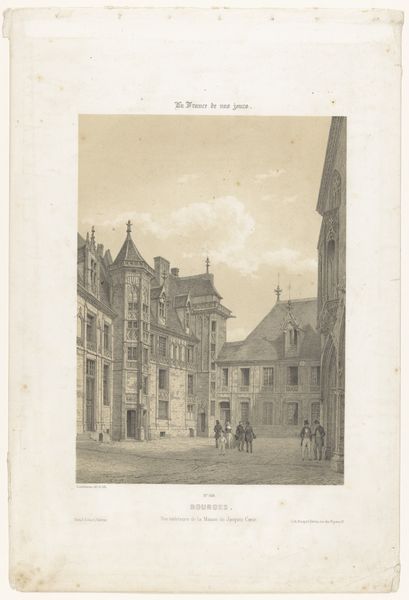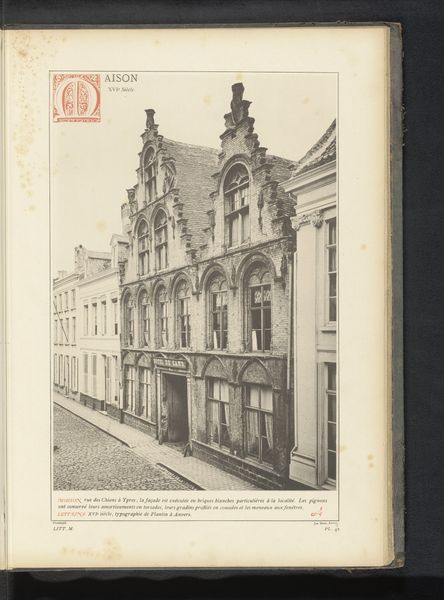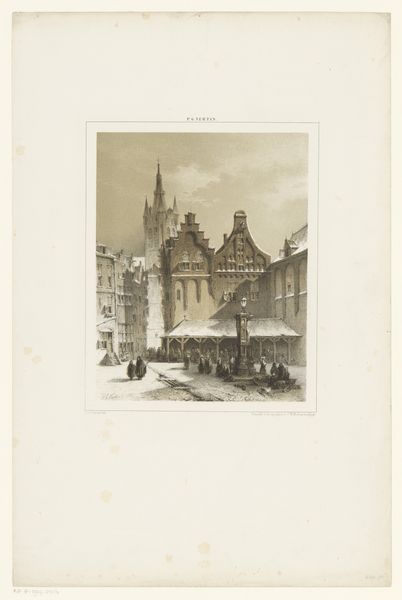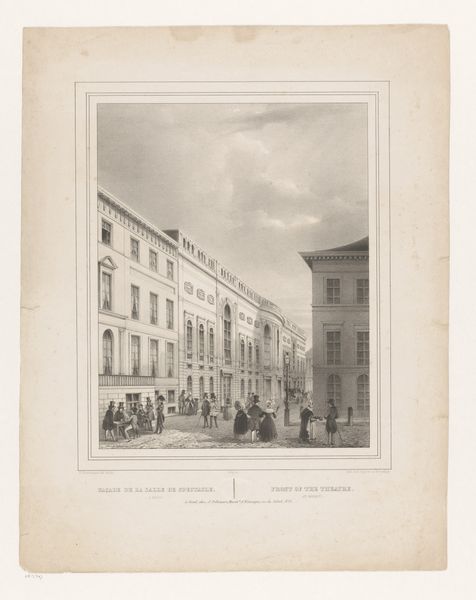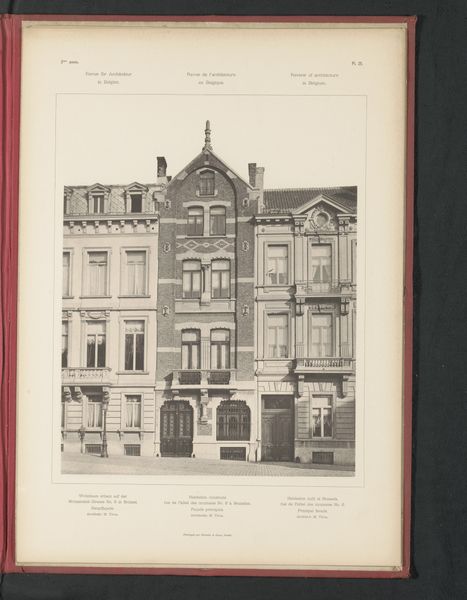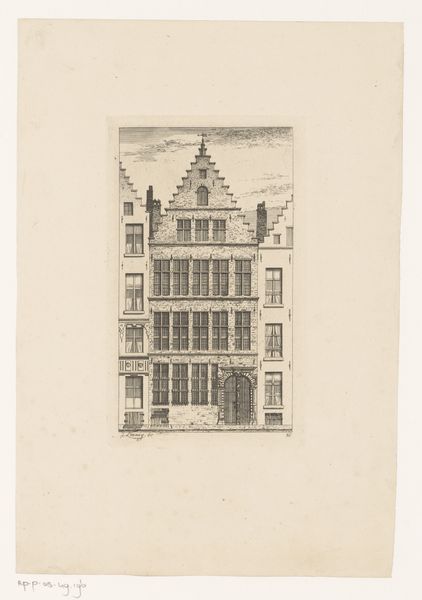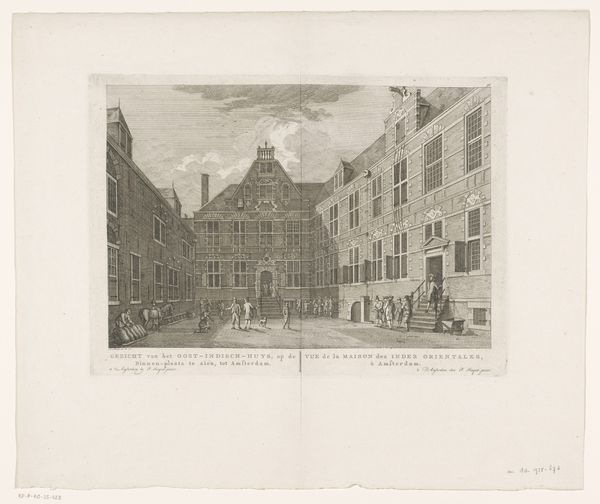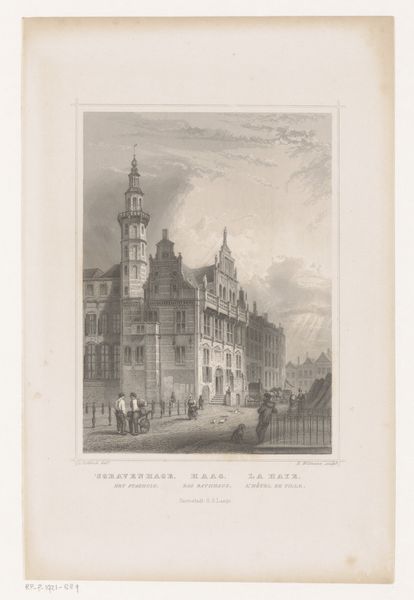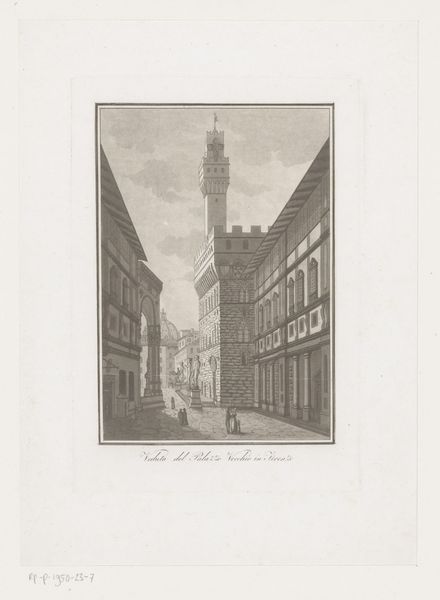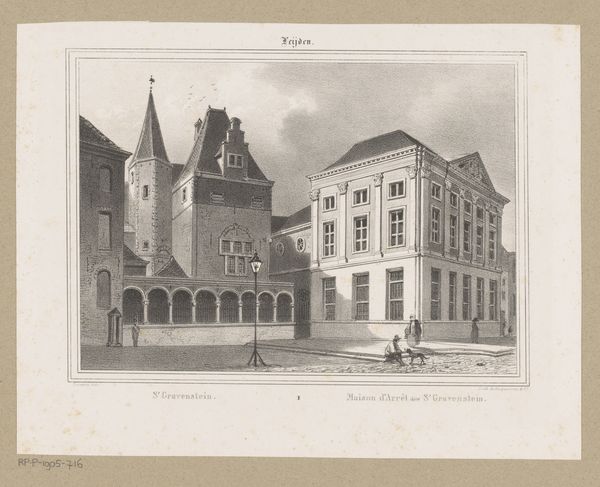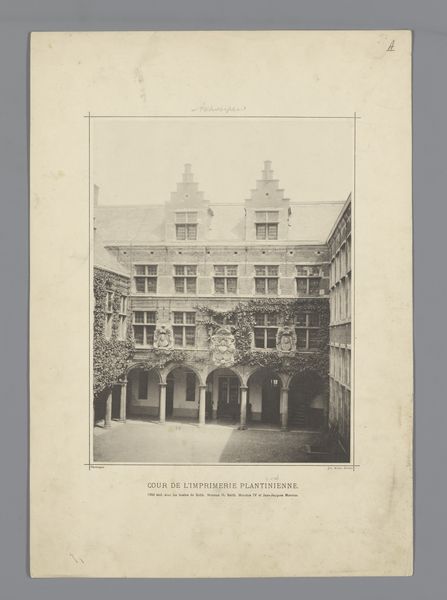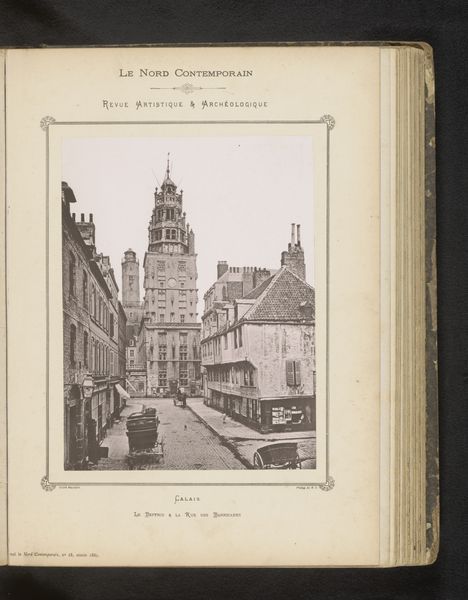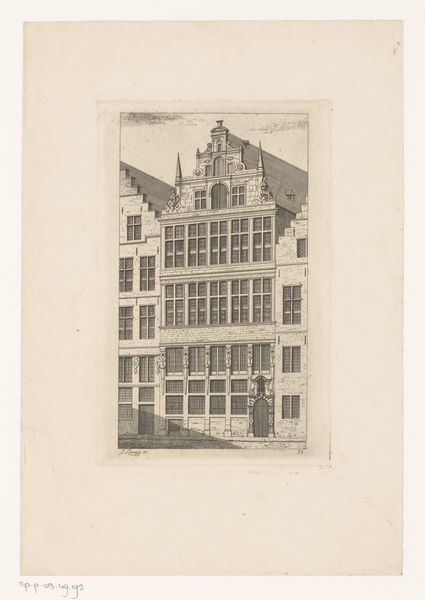
Dimensions: height 327 mm, width 243 mm
Copyright: Rijks Museum: Open Domain
Curator: There's something so immediate about this image of Maastricht's old town hall. It has a very grounded, lived-in quality. Editor: This etching, drawn and printed by Alexander Schaepkens in 1857, presents more than just a building; it presents a slice of 19th-century urban life. Consider the figures milling about; each suggests a narrative thread connected to the town hall, each interacting within this symbolic space. Curator: You're right. Even though it’s in shades of gray, it feels quite vibrant, capturing that sense of community and interaction that the old city center represents. The town hall looms as more than stone and mortar. For instance, do the people congregating at the base signify the civic symbolism rooted in daily interactions and traditions? Editor: Absolutely. Its imposing architecture isn't merely about governance, but also societal memory, rendered visible in its repeating design. Buildings become vessels, after all. Look at the architectural structure: that roofline plunging towards the streets resembles a face scowling toward passersby below. Curator: A fascinating reading. I see the Romantic's lens here in portraying an older style with a touch of realism; perhaps the artist aims to evoke an idyllic past when city structures spoke for civic power. Schaepkens makes sure to render every brick! Editor: Note, however, how architecture can be wielded—how the town hall could act as a silent protagonist, an observer and, inevitably, enforcer of social order and even boundaries? Look how even the people have created informal seating there as though aware that all actions at any time come under review Curator: That makes me consider the psychology of cityscapes further: aren't structures, especially public ones, stage settings for communal dramas? Schaepkens has subtly captured this delicate symbiosis between a populace and its institutions! I think of cultural expectations, what it represented and why so many birds seem drawn upwards! Editor: Schaepkens prompts us to question history—not simply through texts but rendered visibly within constructed spaces. To consider how structures subtly perpetuate their ideological function, from his etched lines to its looming presence still. It gives me pause about all urban spaces! Curator: I leave seeing Schaepkens' etching in new ways: it provides us a doorway—as much metaphorically as structurally!
Comments
No comments
Be the first to comment and join the conversation on the ultimate creative platform.
